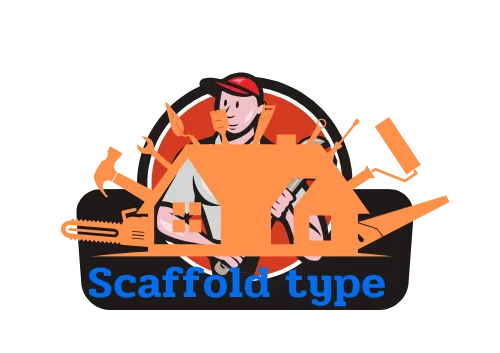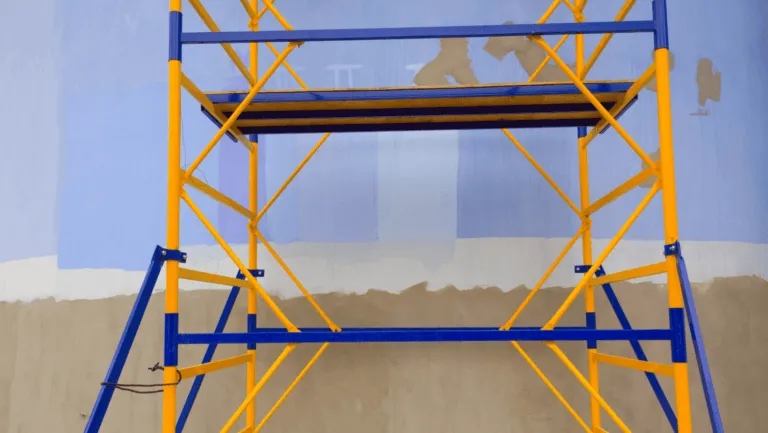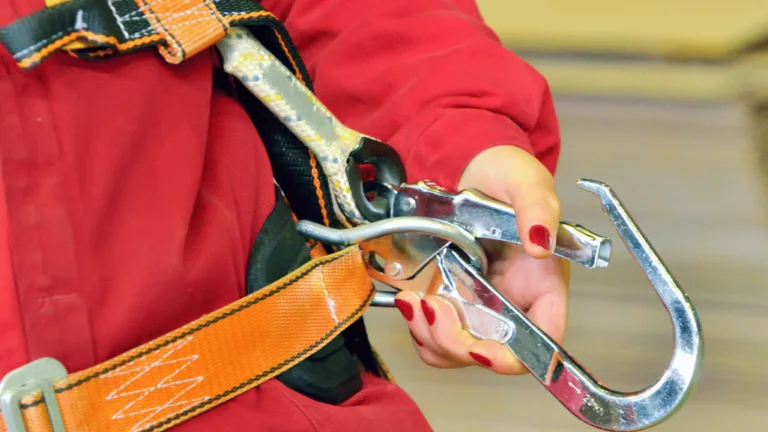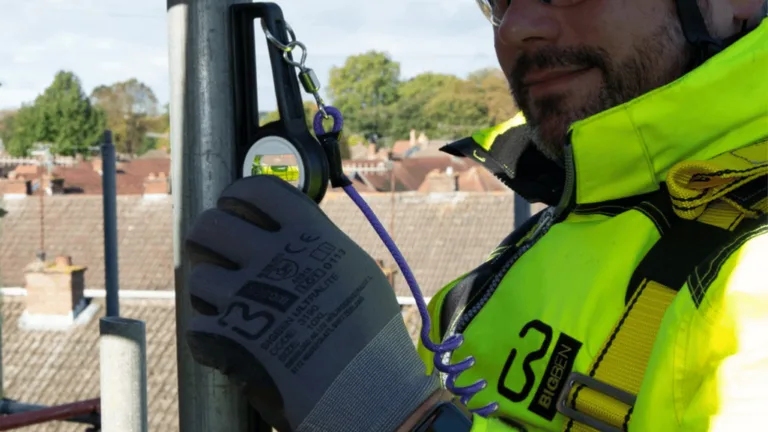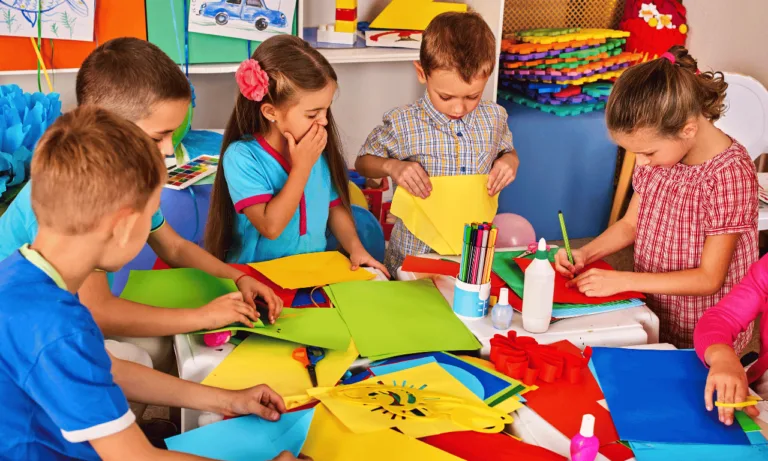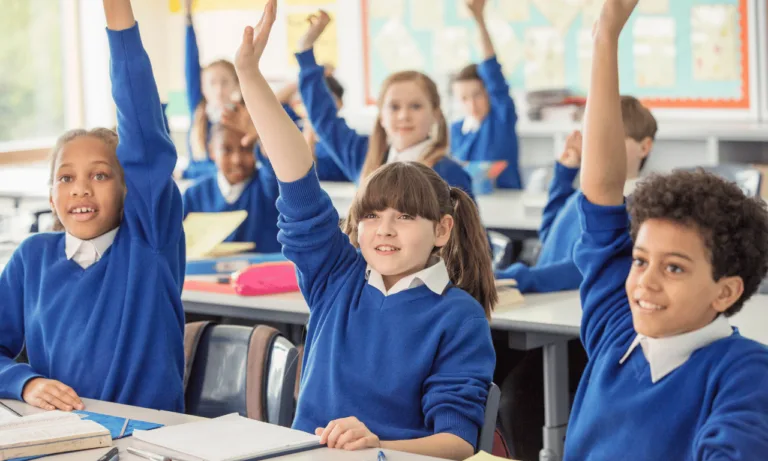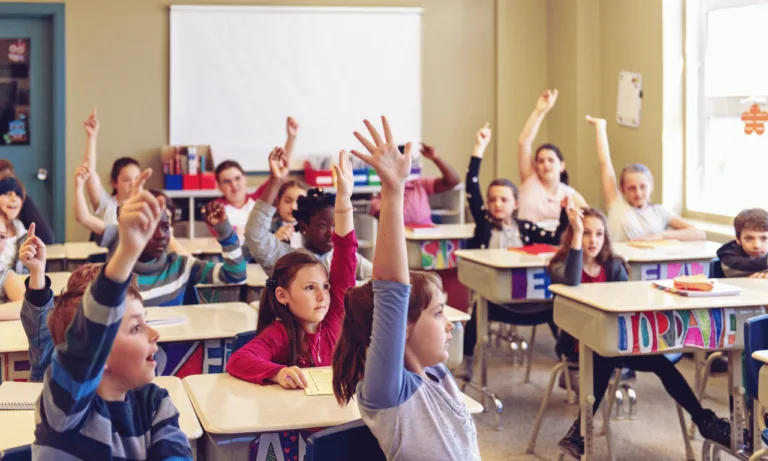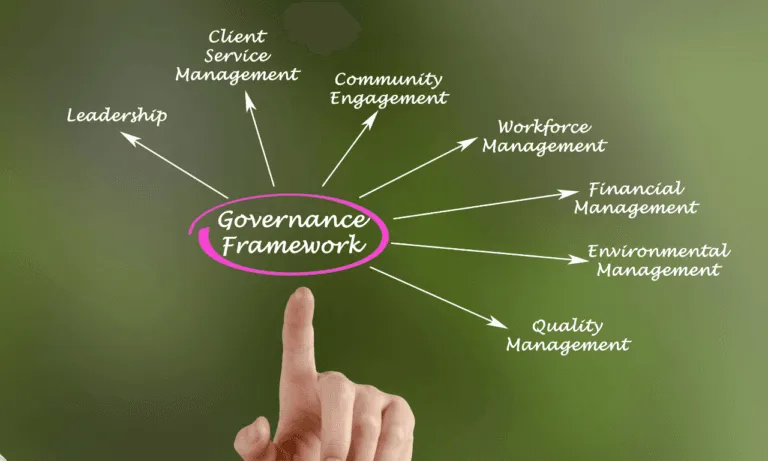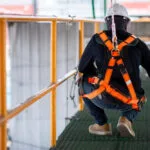Phone:
(+65)8319-0742
Introduction
Scaffolding is a powerful instructional strategy that provides temporary support to students as they learn new concepts and skills. By breaking down complex learning into manageable chunks and aligning new concepts with students’ current comprehension levels, scaffolding helps ensure that concepts students encounter are understood, thereby avoiding confusion and promoting effective learning. In this article, we will explore the concept of scaffolding in education, its benefits, and effective strategies for implementing it in various educational settings.
Inclusive Education Scaffolding represents a cornerstone of our commitment to fostering progress for every learner. The implementation of effective instructional scaffolding strategies is not just a method but a mission to empower students with Special Education Needs. It calls for an insightful balance of tailored support and expectations that encourages independence and self-growth.
Utilizing Scaffolding for Special Education within a classroom environment means educators must go beyond a one-size-fits-all approach. It is about creating a tailored blueprint that acknowledges each student’s unique learning profile, making academic content accessible and engaging. Introducing tools like graphic organizers can help students structure complex information visually, facilitating better understanding and engagement. Additionally, many online curriculum programs can provide adaptive learning paths and personalized support for students with special needs, further enhancing their learning experience.
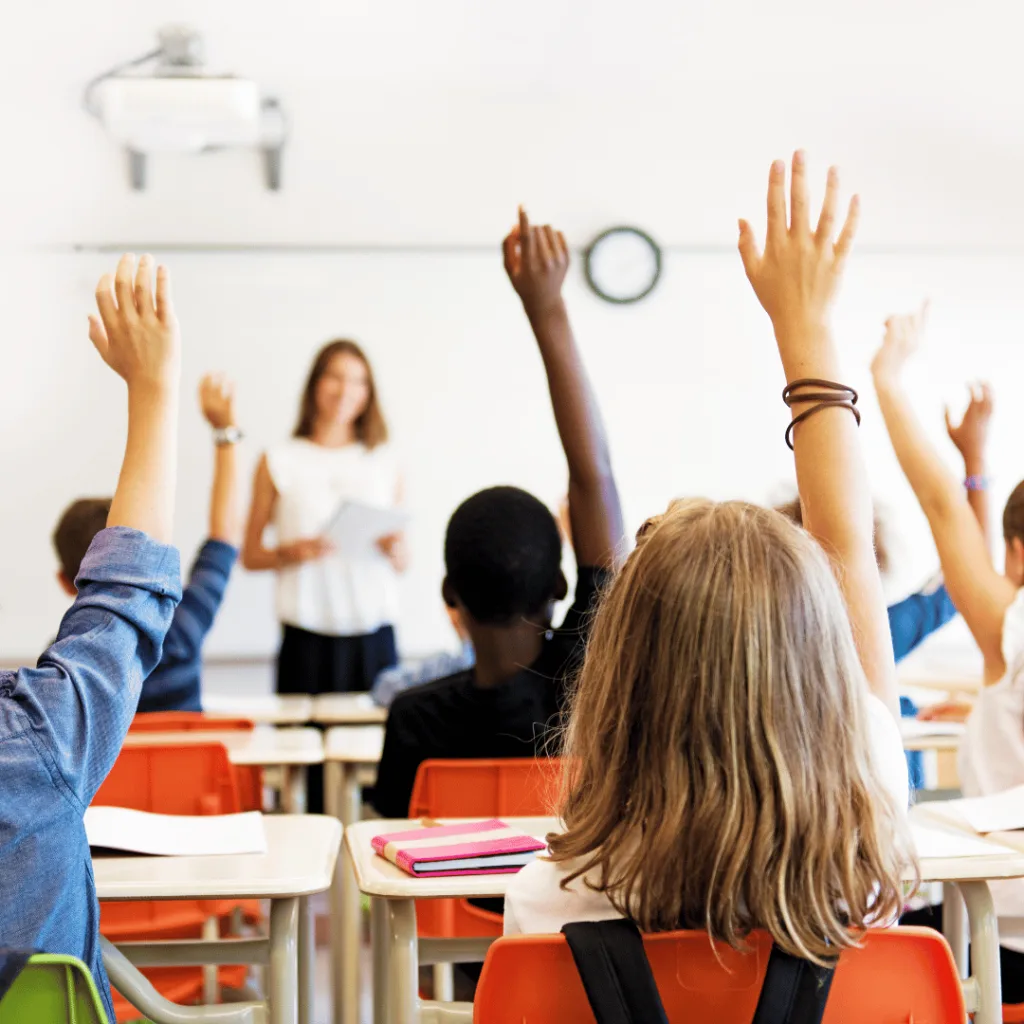
In the context of special education, Special Education Scaffolding is akin to constructing a customized educational bridge for students with special needs. Scaffolding techniques for special needs students lay the foundation for academic success, tailored to support the journey of learning at the pace and level suited to each individual’s abilities and strengths.
Each student in a special education classroom brings a unique set of abilities and challenges to the table. To truly implement effective special education scaffolding, educators must begin with a keen understanding of the distinctive learning profiles of their students. This undertaking involves not just recognizing the diverse capabilities but also providing the appropriate support that can range from sensory tools to cognitive strategies, ensuring that each student can access the curriculum meaningfully. These strategies support student learning by providing necessary guidance.
Flexibility is the cornerstone of scaffolding techniques for special needs students. It requires educators to be adaptive, employing a multiplicity of instructional methods like tactile learning tools and visual supports, all calibrated for the varied learning styles seen within the special education environment. Such tailored scaffolding not only respects but celebrates the diversity of learners, promoting a culture of inclusive education.
Achieving mastery in learning for special education students often necessitates the strategic use of ‘chunking’ and repetition. By breaking down complex concepts into smaller, more digestible parts â or chunks â students can undertake the learning process in stages, leading to more successful outcomes. Reinforcement through repetition further ingrains the knowledge, catering to the need for more time to consolidate learning. This layered approach is fundamental in scaffolding for special education, where each small victory paves the way for the next academic achievement.
Ensuring students with disabilities receive adequate support in the classroom is crucial for their academic success. Educational Supports for Special Education are designed to align with the unique needs specified within a student’s Individualized Education Plan (IEP). Through a variety of Support Strategies for Students with Disabilities, educators can modify their teaching methods and the curriculum, enabling a learning environment that cultivates growth and independence. Let’s explore how these educational supports function as a foundation for effective instruction.
Accommodations: Teachers implement accommodations by adjusting how a student accesses information and demonstrates learning. This does not change instructional goals but reshapes execution to provide an equal opportunity for success, whether by presenting instructional material in multiple formats or allowing extra time to complete assignments.
Modifications: Unlike accommodations, modifications entail altering the educational expectations and assessing the student’s understanding relative to their peers. Tailoring the curriculum to fit individual capabilities encourages meaningful engagement and knowledge retention.
Effective support strategies involve not only the introduction of these supports but also the careful phasing out, ensuring that as students develop skills and confidence, they rely less on external aids and more on their internal competencies. Monitoring this progression is essential, as it informs the educator when to introduce new challenges and complexities to the student’s academic journey.

In summary, weaving together Educational Supports for Special Education with tailored instruction serves to scaffold learning in a manner that aligns with each student’s path to academic achievement. By dynamically adjusting supports in response to student growth, educators pave the way toward fostering self-reliant learners equipped to reach their fullest potential.
Accommodations play an integral role within scaffolding strategies designed to enrich the learning experience of students in special education. By integrating Special Education Academic Support through various tools and technology, educators can modify the learning environment to address the diverse needs of their students. These strategic enhancements not only facilitate greater student engagement but also empower learners to reach their full academic potential.
Incorporating assistive technology within Scaffolding in the Special Education Classroom offers a pathway to overcoming learning obstacles. Interactive software and applications can significantly enhance reading, writing, and communicationâkey areas where students with special education needs often require additional support. These tools serve to level the playing field, allowing all students to participate fully in classroom activities and access the curriculum more effectively.
One of the core Special Education Teaching Strategies used in scaffolding is the modeling of tasks, accompanied by guided practice. This approach allows students to observe the practical application of a concept or tool before attempting it themselves, thus ensuring a clearer understanding and reducing uncertainties. Gradual release of responsibility from teacher to student ensures that every learner gains the confidence and competence necessary in mastering new skills.
Successful scaffolding facilitates the generalization of skills across various academic subjects, thereby solidifying the versatility and transferability of the learned competencies. Through Special Education Academic Support, students can apply a mastered skill in one context to new and differing scenarios, thereby demonstrating thorough understanding and adaptation. This cross-curricular application is vital in preparing students not only for the next grade level but also for real-world challenges.
The thoughtful alignment of accommodations and teaching strategies ensures that scaffolding in the Special Education classroom is not just a teaching method, but a robust foundation for lifelong learning and academic achievement.
In the landscape of modern education, Inclusive Education Scaffolding plays a pivotal role in ensuring that collaborative learning experiences accommodate the needs of all students. These structures provide a vital framework within which every child, regardless of capability, has the opportunity to engage actively and benefit from shared educational activities.
Collaborative learning activities are not just group tasks; they are strategic educational encounters that foster peer-to-peer interaction and drive home the essence of cooperative engagement. Here are some of the reasons why incorporating inclusive education scaffolding into collaborative learning environments is crucial:
Utilizing structured discussions, such as fishbowl activities, within the zone of proximal development, creates a rich soil in which seeds of knowledge can sprout from the supportive interaction between students. These discussions are carefully orchestrated to guide students from concept introduction to deeper comprehension.
Moreover, Collaborative Learning is not a one-size-fits-all solution; it needs to be molded to fit the dynamic spectrum of learners. To facilitate this adaptation, the following action-oriented strategies are effective:
In conclusion, the interplay between Inclusive Education Scaffolding and Collaborative Learning is a testimony to the adaptive nature of teaching. It celebrates the collective progress of students and teachers as they navigate the educational journey together, building a foundation for lifelong learning and mutual respect.

In reflecting on the vital methodologies within special education, we recognize the profound impact that effective Special Education Teaching Strategies have on student success. These scaffolding strategies embody the spirit of inclusivity and empowerment, addressing a spectrum of learning needs. By implementing accommodations and instructional supports, educators construct a bridge from the student’s current capabilities to potential academic achievements. It is in the nuance of adjustment and personalization that the tapestry of learning is woven, creating a richer, more accessible educational landscape for all.
The essence of these specialized strategies lies in their meticulous pacing and flexibility. Similar to the gradual progression of a young child taking their inaugural steps, Special Education Teaching Strategies provide the necessary supportâonly to retract gently as independence blooms. This process fosters a classroom environment that catalyzes engagement and comprehension, ensuring that each student grasps the lesson at their own pace. With the foundation solidly laid, both the fulfillment of the student’s learning journey and the reward for the educator’s efforts are magnified.
Ultimately, it is through the patient layering of knowledge and skills that scaffolding bears fruitânurturing students’ autonomy and confidence. As educators refine their toolkit of Special Education Teaching Strategies, they champion the advancement of their students, step-by-step, into brighter academic futures. Through persistent effort, thoughtful application, and a steadfast commitment to every student, the goal of true learning accessibility becomes an attainable reality. And therein lies the transformative power of education: to unlock potential, embrace diversity, and celebrate every milestone in the path of learning.
What is Scaffolding in Education? Understanding the Zone of Proximal Development
Scaffolding is an instructional approach that provides support to students as they learn new concepts or skills. It involves delivering lessons in distinct segments, with decreasing support as students master new concepts. The term “scaffolding” was first used in an educational context in the mid-1970s by American psychologist Jerome Bruner. Bruner described scaffolding as “the steps taken to reduce the degrees of freedom in carrying out some task so that the child can concentrate on the difficult skill she is in the process of acquiring.”
Benefits of Scaffolding in Education to Support Student Learning
Scaffolding has numerous benefits for student learning. It creates a supportive classroom environment where students feel comfortable asking questions and making mistakes. Scaffolding encourages students to take a more active role in their learning, as the teacher slowly phases out the initial support. By providing temporary support, scaffolding helps students develop self-directed learning skills and self-management. Additionally, scaffolding can benefit students by providing a sense of security and confidence.
Instructional Scaffolding Process
The instructional scaffolding process involves a series of deliberate steps designed to support student learning as they acquire new concepts and skills. This process begins with an initial assessment of students’ prior knowledge and skills, followed by the identification of clear learning objectives. Teachers then develop a structured plan to achieve these objectives, incorporating various scaffolding strategies to provide the necessary support. As students master the new concepts, the support is gradually reduced, fostering independence and confidence.
The instructional scaffolding process can be broken down into several stages:
Initial Assessment: The teacher assesses students’ prior knowledge and skills to determine their starting point. This helps in identifying what students already know and what they need to learn, ensuring that the support provided is relevant and effective.
Identification of Learning Objectives: The teacher sets specific, measurable learning objectives that outline what students need to achieve. These objectives guide the instructional planning and ensure that the learning process is focused and goal-oriented.
Development of a Plan: The teacher creates a detailed plan to achieve the learning objectives. This plan includes the selection of appropriate scaffolding strategies, such as modeling, graphic organizers, and verbal cues, tailored to the students’ needs.
Implementation of Scaffolding Strategies: The teacher implements the chosen scaffolding strategies to provide support to students. For example, using graphic organizers can help students visually organize complex information, while verbal cues can keep them focused and on track.
Gradual Release of Support: As students master the new concepts or skills, the teacher gradually reduces the level of support. This encourages students to become more self-reliant and confident in their abilities.
Ongoing Assessment: The teacher continuously monitors students’ progress and adjusts the scaffolding strategies as needed. This ensures that the support remains effective and responsive to the students’ evolving needs.
By following this structured process, teachers can effectively support student learning and help students master new concepts and skills.
Effective Scaffolding in Special Education
Scaffolding is particularly effective in special education settings, where students may require additional support to master new concepts. By providing tailored support, scaffolding helps students with special needs build confidence and develop autonomy in their learning. Effective scaffolding in special education involves assessing students’ prior knowledge, identifying areas of need, and providing targeted support. Teachers can use various scaffolding strategies, such as graphic organizers, visual aids, and verbal cues, to support students with special needs.
Effective Teaching Strategies for Diverse Classrooms: Scaffolding Strategies
Using Prior Knowledge to Scaffold Learning
Using prior knowledge is an effective way to scaffold learning, as it helps students connect new information to their existing knowledge and experiences. By tapping into students’ prior knowledge, teachers can create a foundation for new learning and make it more meaningful and relevant. This approach also encourages students to think critically and make connections between different pieces of information.
To use prior knowledge to scaffold learning, teachers can start by assessing students’ prior knowledge and experiences related to the topic. This can be done through class discussions, surveys, or written reflections. Once teachers have an understanding of students’ prior knowledge, they can use it to inform their instruction and make connections to new information.
For example, if a teacher is introducing a new concept in science, they can start by asking students what they already know about the topic. This can help students recall relevant information and make connections to new concepts. Teachers can also use graphic organizers to help students organize their prior knowledge and make connections to new information. Graphic organizers provide a visual representation of students’ thoughts, making it easier to see how new information fits into their existing knowledge framework.
Modeling and Demonstrating Complex Concepts
Modeling and demonstrating complex concepts is another effective way to scaffold learning. By showing students how to complete a task or solve a problem, teachers can provide a clear understanding of the process and help students develop their skills.
To model and demonstrate complex concepts, teachers can use a variety of strategies, such as think-alouds, where they verbalize their thought process as they complete a task. This can help students understand the steps involved in completing a task and how to approach complex problems. For instance, a teacher might solve a math problem on the board while explaining each step out loud, allowing students to follow along and grasp the methodology.
Teachers can also use visual aids, such as diagrams or flowcharts, to help students understand complex concepts. By breaking down complex concepts into smaller, more manageable parts, teachers can help students develop a deeper understanding of the material. Visual aids serve as a graphic organizer, making abstract ideas more concrete and accessible.
Facilitating the Learning Process
Facilitating the learning process is a critical component of scaffolding. By providing support and guidance, teachers can help students navigate the learning process and develop their skills.
To facilitate the learning process, teachers can use a variety of strategies, such as providing feedback and encouragement. This can help students stay motivated and engaged in the learning process. Constructive feedback helps students understand their progress and areas that need improvement, while encouragement boosts their confidence and persistence.
Teachers can also use scaffolding strategies, such as providing temporary support and guidance, to help students develop their skills. By gradually releasing responsibility to students, teachers can help them develop autonomy and self-regulation skills. This approach ensures that students are not overwhelmed and can build their competence step-by-step. For example, a teacher might initially provide a lot of guidance on a writing assignment but gradually reduce the support as students become more proficient, encouraging them to take ownership of their learning.
By implementing these strategies, teachers can create a supportive and engaging learning environment that encourages students to take an active role in their education, ultimately leading to greater academic success and independence.
Implementing Scaffolding in the Classroom
Implementing scaffolding in the classroom requires thoughtful planning and execution. Teachers can use a variety of scaffolding strategies to provide support to students, ensuring that each learner can engage with and understand the material. Here are some effective strategies:
Modeling: The teacher demonstrates the new concept or skill, providing students with a clear example of what is expected. This helps students understand the process and sets a standard for their own work.
Graphic Organizers: Tools such as concept maps or Venn diagrams can help students organize their thoughts and understand complex relationships. Graphic organizers provide a visual representation of information, making it easier for students to grasp and retain new concepts.
Verbal Cues: The teacher uses prompts or questions to guide students’ thinking and keep them focused. Verbal cues can help students stay on track and encourage them to think critically about the material.
Physical or Verbal Cues: Gestures, facial expressions, or other physical cues can provide immediate feedback and encouragement to students. These cues help reinforce learning and keep students engaged.
Technology: Utilizing online curriculum programs and educational apps can enhance the learning experience. These tools offer interactive and personalized support, helping students engage with the material in new and dynamic ways.
To encourage students to take an active role in their learning, teachers can also:
Encourage Students to Ask Questions: Creating an environment where students feel comfortable asking questions helps them seek clarification and deepen their understanding.
Provide Opportunities for Reflection: Allowing students to reflect on their learning and think critically about what they have learned fosters self-awareness and critical thinking skills.
Encourage Group Work: Promoting collaboration and teamwork through group activities helps students learn from each other and develop social and communication skills.
By implementing these scaffolding strategies, teachers can create a supportive and engaging learning environment that encourages students to take an active role in their education.
Zone of Proximal Development
The zone of proximal development (ZPD) is a concept developed by Lev Vygotsky that refers to the range of knowledge and skills that a student can learn with the support of a teacher or more knowledgeable peer. The ZPD represents the area where students are capable of learning and understanding new concepts and skills with the help of scaffolding strategies.
The ZPD is characterized by three stages:
Initial Stage: At this stage, the student is unable to perform the task or understand the concept without support. This is where the teacher’s guidance is most crucial.
Intermediate Stage: The student can perform the task or understand the concept with some support. This stage involves a collaborative effort between the teacher and the student, where scaffolding strategies are actively employed.
Advanced Stage: The student is able to perform the task or understand the concept independently. At this point, the scaffolding can be gradually removed, as the student has mastered the new skill or concept.
Teachers can use the ZPD to identify the level of support that students need and to develop scaffolding strategies tailored to their individual needs. By providing support within the ZPD, teachers can help students learn and understand new concepts and skills more effectively. This approach ensures that the support is neither too easy nor too difficult, but just right to challenge and engage the student.
Understanding and applying the ZPD in the classroom allows teachers to create a dynamic and responsive learning environment. It helps in identifying the optimal level of challenge for each student, ensuring that they are continuously progressing and developing their skills. By aligning scaffolding strategies with the ZPD, teachers can support students in reaching their full potential and achieving academic success.
frequently asked questions
1. What is scaffolding in special education?
- Definition: Scaffolding is an instructional strategy where teachers provide temporary support or structure to help students learn new concepts, skills, or tasks.
- How it Works: Teachers gradually remove these supports as students become more capable and independent.
- Purpose: To bridge the gap between what a student can do alone and what they can do with guided assistance, ultimately increasing confidence and mastery.
2. Why is scaffolding important for students with special needs?
- Personalized Support: Scaffolding addresses individual learning differences by providing the exact type of assistance each student needs.
- Builds Confidence: As students successfully complete tasks with support, they gain confidence and are more motivated to tackle future challenges.
- Promotes Independence: Over time, removing the scaffold encourages students to rely on their own skills and strategies, fostering autonomy.
- Reduces Overwhelm: Breaking down tasks into smaller, manageable steps helps prevent frustration and disengagement, especially for students who struggle with complex tasks.
3. What are some common scaffolding strategies for special education classrooms?
- Modeling & Demonstration
- The teacher shows how to perform a task or solve a problem before asking the student to try.
- Visual Aids & Graphic Organizers
- Tools like charts, diagrams, or concept maps help students organize information and see relationships.
- Guided Practice
- Working through examples step-by-step, with ongoing feedback and prompts from the teacher.
- Chunking the Content
- Breaking lessons into smaller parts or tasks so students can focus on one piece at a time.
- Prompting & Questioning
- Using targeted questions or hints to steer students toward the correct response or strategy.
4. How can technology be used to support scaffolding in special education?
- Adaptive Learning Software: Programs that adjust difficulty levels based on the student’s performance, providing just-right challenges.
- Text-to-Speech & Speech-to-Text Tools: These assist students with reading or writing difficulties by offering auditory or verbal support.
- Interactive Whiteboards & Apps: Visual demonstrations can be paused, replayed, or highlighted, making it easier to revisit challenging steps.
- Online Tutorials & Videos: Students can watch short, step-by-step explanations at their own pace, pausing or rewinding as needed.
- Progress Monitoring Tools: Digital platforms can track student performance in real time, helping teachers know when to reduce or increase support.
5. How can teachers measure the success of scaffolding strategies in special education?
- Observational Assessments: Monitor student engagement, participation, and improvement in classroom tasks.
- Performance Tasks: Compare how students perform on specific assignments or tests before, during, and after scaffolding.
- Formative Assessments & Checkpoints: Frequent quizzes, exit tickets, or quick writes to gauge understanding and see if additional support is needed.
- Student Self-Assessment: Encourage students to reflect on their comfort level and progress, which helps them recognize their growth.
- Reduction of Supports Over Time: Track how often students need scaffolds, aiming for gradual independence as a measure of success.
